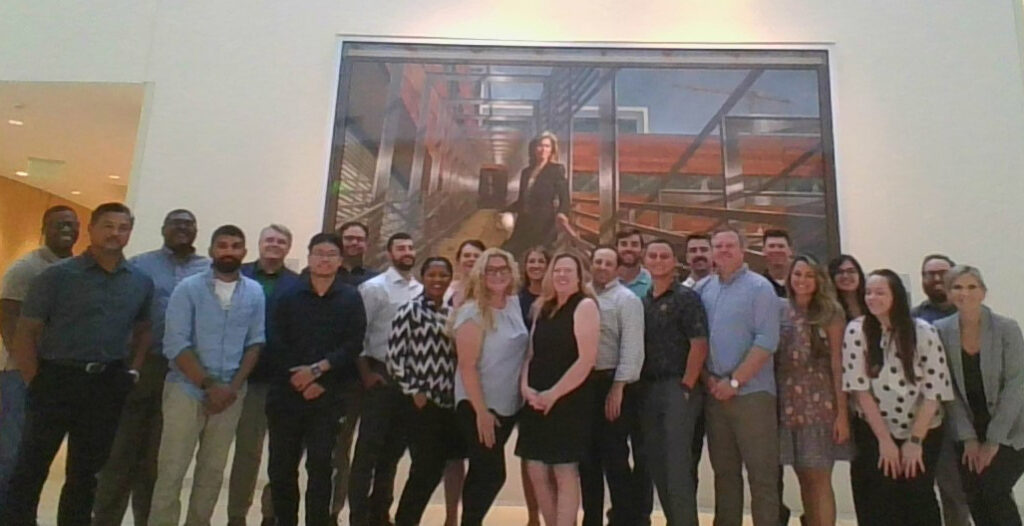


Symbols of “the future” are often generalized as gadget-fueled devices and robotic machinists and butlers. But more often than not, the iconic “futuristic” symbol has been urban air mobility (UAM) devices that carry packages, food orders, drugs, and people. From “The Jetsons” to “Demolition Man,” pop culture has made the idea of flying machines seem pretty far-fetched. This summer, Strategic Innovation Certificate students quickly learned not only that urban air mobility is closer than one might think, but also how a materials science lab at University of South Carolina (USC) can help build this new world.
Urban air mobility was the topic that these students explored in the MGMT 775 Competitive Strategy Analysis course at the University of South Carolina (USC). The MGMT 775 course is offered by the Darla Moore School of Business through the SC Innovates® SmartState® Center. Led by SC Innovates’ own Kevin Diana, MBA, this semester’s class partnered with the SmartState Center for Multifunctional Materials and Structures at the McNair Aerospace Center.
“Urban air mobility is an ideal topic for so many reasons,” explains Diana. “Major breakthroughs and developments were cascading throughout the UAM ecosystem as the semester progressed in real-time. We were in a live business case.”
At the heart of MGMT 775 is the experience with the technology partner, which is made possible through the connections made through the network of SmartState Endowed Chairs and their Centers. Students toured the lab on the first day of class and heard from Joshua Widawsky, McNair Center Program Manager, and Professor Paul Ziehl, the Associate Dean for Research in the College of Engineering and Computing at USC and the SmartState Center Director.
“I was immediately impressed by the drive and professionalism of the group,” says Widawsky, a Moore School alumnus. “They asked great questions during the lab tour and throughout the semester. Very quickly, they picked up on an incredibly new and difficult technology.”
The course was held over two Saturdays in-person on the Columbia campus, and one Saturday online, with weekly check-ins between classes. After the tour of the lab, students were divided into five teams to work in isolation from each other on proposals for how McNair’s materials and sensor technology can advance the future of UAM.
On the final Saturday of the semester, students gave their final presentations to McNair as well as their peers. After working in isolation from each other for two months, students were finally able to see how their peers were approaching the same problem—and they came prepared to answer questions by the McNair team and each other. Among the McNair team in the audience was Jaspreet Pandher, PhD, a former student of Laura B. Cardinal, the SmartState Endowed Chair in Innovation + Commercialization.
“Pandher was one of the early STEM students to join my innovation class my very first year at the Moore School,” reflects Cardinal. “Since then, we have had McNair students participate. It’s really fun to see, with this project, things come full circle.”
When asked about his experience on the other side of the class, Pandher said, “It was exciting to be able to hear what the students presented, having had that experience myself a few years ago. I really enjoyed seeing what the groups came up with and the discussions that evolved. By the end of the course, each group had developed unique and useful insights for a wide variety of urban air mobility challenges. Their presentations were professional and detailed adding value to the McNair Center and our team. We were really honored to be a part of the experience.”